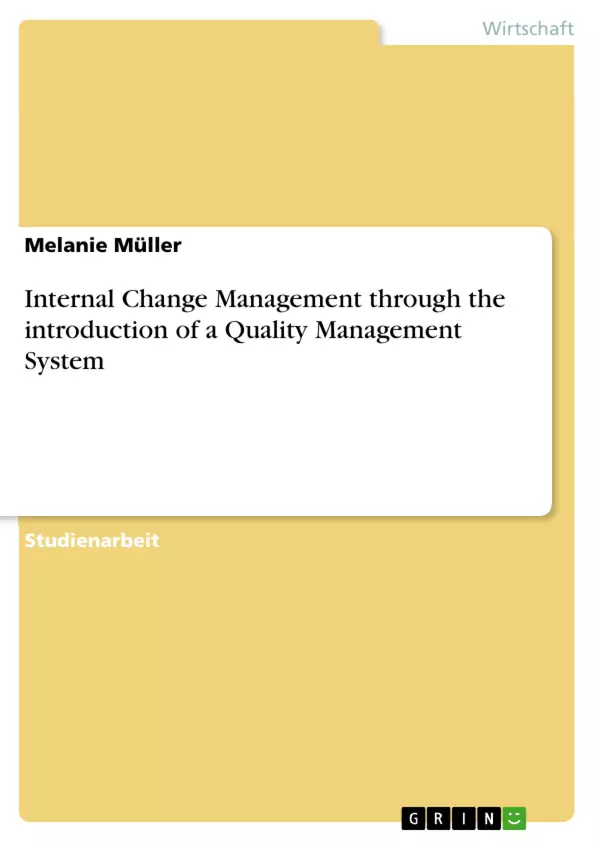Nothing is as constant as change. Companies are influenced by a variety of
factors which made changes necessary. The cause of changes could be
internal or external. External factors could be a change of business partners,
an economic crisis, the globalisation or a change in laws.
In this case the change was internal. The whole company was unorganised,
for example without any overview of current figures of incoming labour of the
day, any written work instruction, how the tasks has to be done, or an
overview of complaints from customers. The employees had no targets to
achieve or some instruction how much work they have to do at one day. So
everybody can work how he likes and as much as he likes.
The management decided to introduce a Qualtity Management System in a
part of the company to get an ISO certification. With an ISO certification it
would be possible to get more orders from other business sectors, because
the certification stands for trust and reliability. To enable the certification, it
was necessary to change the whole working situation of the company. For
example processes, work instructions, forms, organisational charts, a Quality
Management Manual, an internal error management and a complaints
management were needed. Furthermore a system for the different work,
which is done at that day, was needed to plan a strategic future. Through a
quality management system, the company has to establish a vision.[...]
Inhaltsverzeichnis
- 1 Starting situation
- 2 Analysis of the Situation
- 3 Discussion of Suggestions/Solutions for the Case
Zielsetzung und Themenschwerpunkte
Die Arbeit befasst sich mit der Einführung eines Qualitätsmanagementsystems in einem Unternehmen und analysiert die Auswirkungen auf die Arbeitsbedingungen und die Organisation. Ziel ist es, die Herausforderungen und Möglichkeiten einer internen Veränderung im Kontext der Qualitätsmanagement-Einführung zu untersuchen.
- Interne Veränderungen durch Einführung eines Qualitätsmanagementsystems
- Analyse der Ausgangssituation und Herausforderungen
- Entwicklung von Lösungsansätzen und Strategien für die Implementierung
- Bewertung der Auswirkungen des Qualitätsmanagementsystems auf die Organisation
- Identifizierung von Chancen und Risiken der Veränderung
Zusammenfassung der Kapitel
1 Starting situation
Das Kapitel beschreibt die Ausgangssituation des Unternehmens vor der Einführung eines Qualitätsmanagementsystems. Es werden die Herausforderungen und Probleme aufgezeigt, die zu dieser Entscheidung führten, wie z.B. mangelnde Organisation, fehlende Arbeitsanweisungen und unzureichende Kontrolle von Prozessen.
2 Analysis of the Situation
Dieses Kapitel analysiert die Situation des Unternehmens im Detail. Es werden die Ursachen für die bestehenden Probleme identifiziert und die Auswirkungen auf die Arbeitsbedingungen und die Organisation beleuchtet.
Schlüsselwörter
Die Arbeit beschäftigt sich mit den Themen Qualitätsmanagement, interne Veränderung, Prozessoptimierung, ISO-Zertifizierung, Organisationsentwicklung, Mitarbeitermotivation und Risikomanagement.
- Quote paper
- Melanie Müller (Author), 2011, Internal Change Management through the introduction of a Quality Management System, Munich, GRIN Verlag, https://www.grin.com/document/189175



